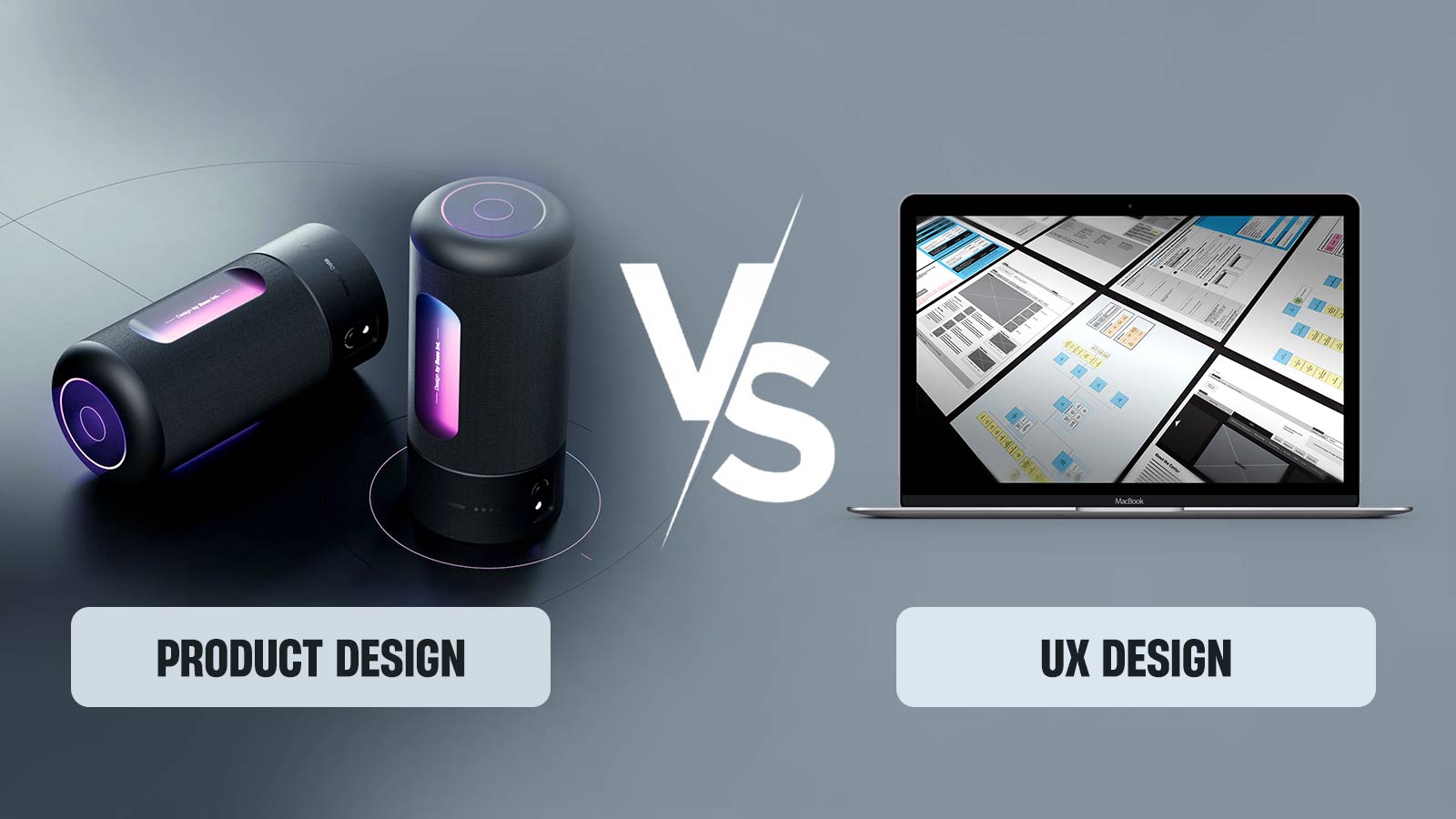
Product Design VS UX Design: Learn The Key Differences!
Picture yourself standing at the crossroads of form and function, aesthetics and usability. Product Design and UX Design are the signposts, each leading down its unique path. But, Product Design vs UX Design, how do they differ actually?
Product Design focuses on products’ physical and functional aspects, while UX Design prioritizes digital user experiences. Both aim to enhance user satisfaction but in distinct ways.
Join us as we decode the secrets behind Product Design and UX Design, unveiling their vital roles in shaping how we interact with the world around us.
Difference Between Product Design & UX Design
| Product Design | UX Design | |
| Primary Focus | Physical products | Digital user experiences |
| Scope | Aesthetics, Functionality, Materials | User interface, Interaction, Usability |
| Deliverables | CAD drawings, prototypes, materials selection | Wireframes, prototypes, user flows |
| Collaboration | Engineers, manufacturers, marketers | Developers, product managers, user researchers |
| Key Metrics | Reliability, manufacturability, cost-effectiveness | Usability, user satisfaction, engagement |
| Research Methods | Market analysis, materials research | User interviews, surveys, usability testing |
| Design Iteration | May span a longer timeframe with multiple iterations | Embraces rapid iteration, often agile approach |
| Tools and Software | CAD software, 3D modeling tools | UX design software, usability testing platforms |
| Skill Sets | Engineering knowledge, materials expertise | User research, interaction design |
| Output | Physical products, industrial designs | Digital interfaces, interactive experiences |
What is Product Design?
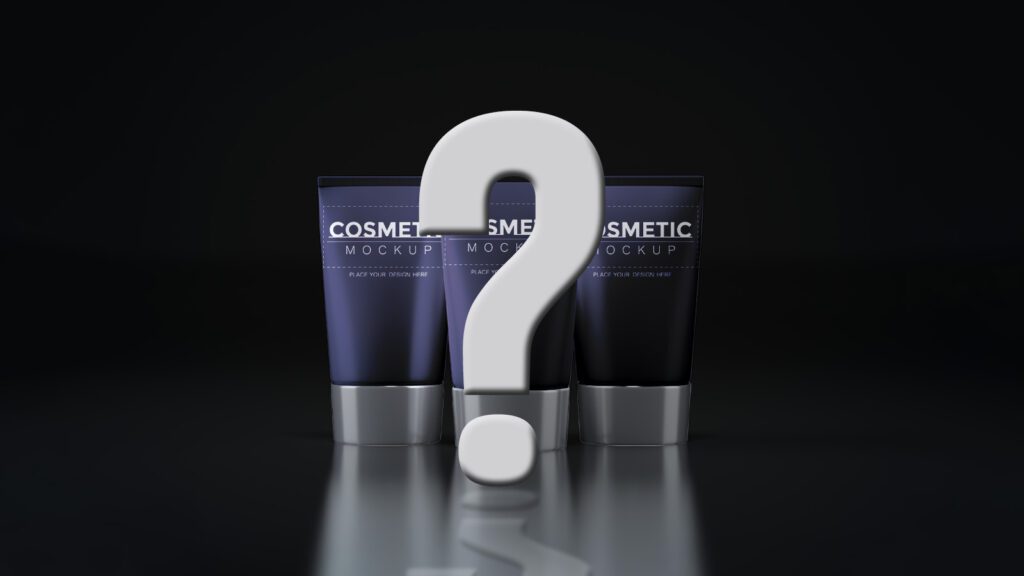
Product design is conceptualizing, creating, and refining a physical or digital product to meet specific user needs and business objectives. It encompasses a range of disciplines, including industrial design, user experience (UX) design, and engineering, to ensure the product is aesthetically pleasing but functional, ergonomic, and user-friendly. Product designers consider factors like user research, market trends, materials, and manufacturing processes to develop innovative and marketable products. They aim to balance form and function, ultimately delivering solutions that enhance user experiences and drive the product’s success in the marketplace.
Key Elements Of Product Design
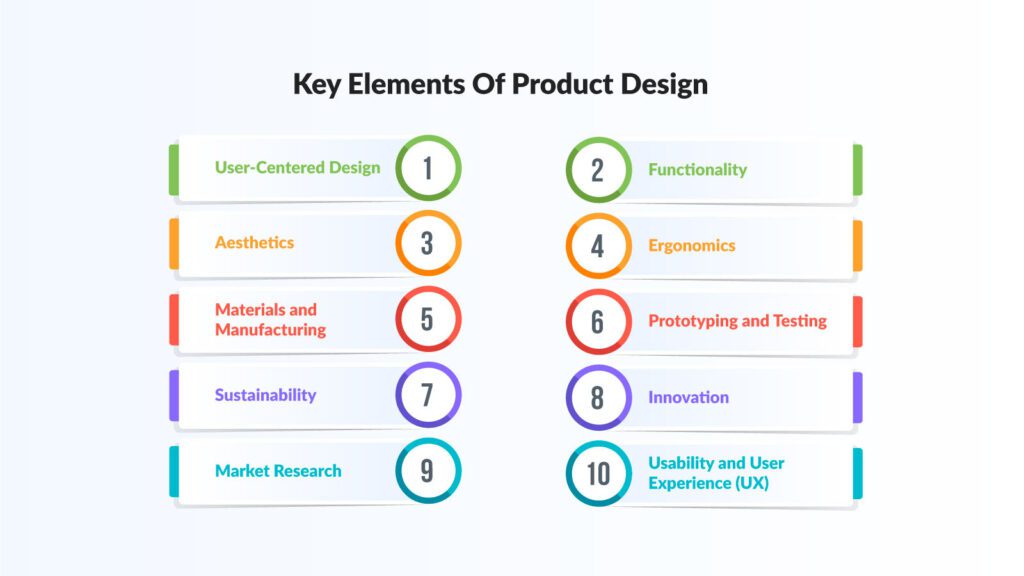
Product design is a multidisciplinary field that combines creativity, usability, and functionality to create innovative and marketable products. Several key elements are essential in the product design process:
- User-Centered Design: Understanding the target audience’s needs, preferences, and pain points is paramount. Conducting user research, creating user personas, and gathering feedback ensures that the final product aligns with user expectations.
- Functionality: A successful product must fulfil its intended purpose effectively and efficiently. Product designers work to ensure that all features and components work seamlessly, providing value to users.
- Aesthetics: The visual appeal of a product plays a crucial role in attracting and retaining users. Product designers focus on creating aesthetically pleasing designs that resonate with the target audience.
- Ergonomics: Products should be comfortable and easy to use. Designers consider ergonomics to ensure the product is comfortable and suits the user’s body and movements.
- Materials and Manufacturing: Selecting the right materials and manufacturing processes is vital for cost-effectiveness, sustainability, and durability. Designers must choose materials that meet functional and aesthetic requirements while considering environmental impact.
- Prototyping and Testing: Prototyping helps designers iterate on their ideas and test them in real-world scenarios. It allows for the identification of design flaws and improvements before mass production.
- Sustainability: Modern product design places a strong emphasis on sustainability. This includes using eco-friendly materials, reducing waste, and designing products with minimal environmental impact throughout their lifecycle.
- Innovation: Product designers are tasked with finding new and creative solutions to problems. This often involves thinking outside the box and pushing the boundaries of what’s possible.
- Market Research: Understanding the competitive landscape and trends is crucial for designing products that stand out and meet market demand.
- Usability and User Experience (UX): Product designers focus on creating an exceptional user experience beyond functionality. This involves optimizing the user interface, navigation, and interactions to make the product user-friendly and enjoyable.
What Is UX Design?
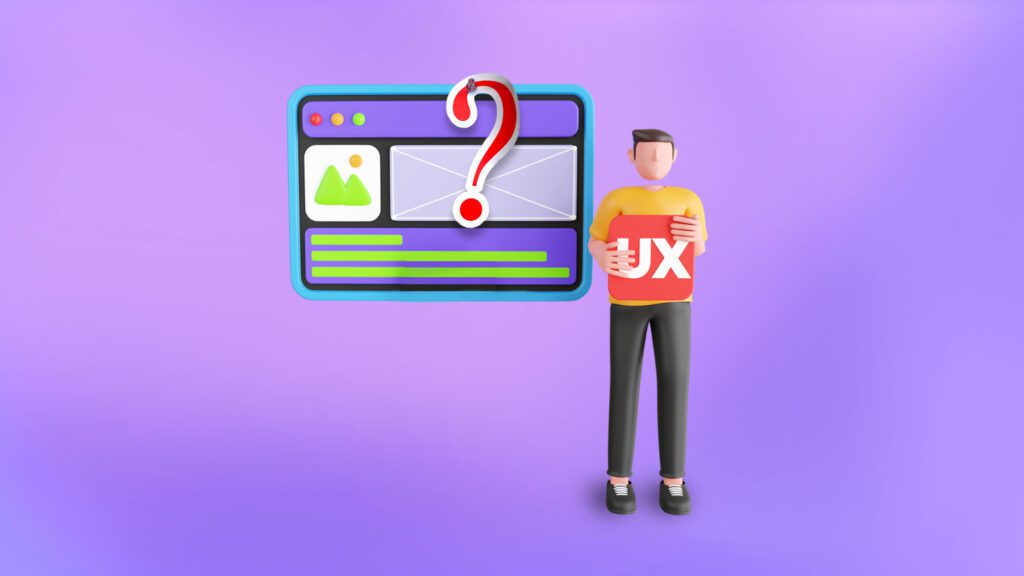
User Experience (UX) design focuses on creating meaningful and seamless interactions between users and products or services. It encompasses the entire user journey, from initial discovery to the final interaction, to optimize usability, satisfaction, and overall experience. UX designers conduct user research, create user personas, design wireframes, and prototypes, and perform usability testing to ensure that a product or service meets user needs and preferences. UX design extends beyond aesthetics, emphasizing functionality, accessibility, and users’ emotional connection with the product. A well-executed UX design enhances user satisfaction and fosters loyalty, ultimately benefiting the product or service’s success.
What Are Some UX Design Principles?
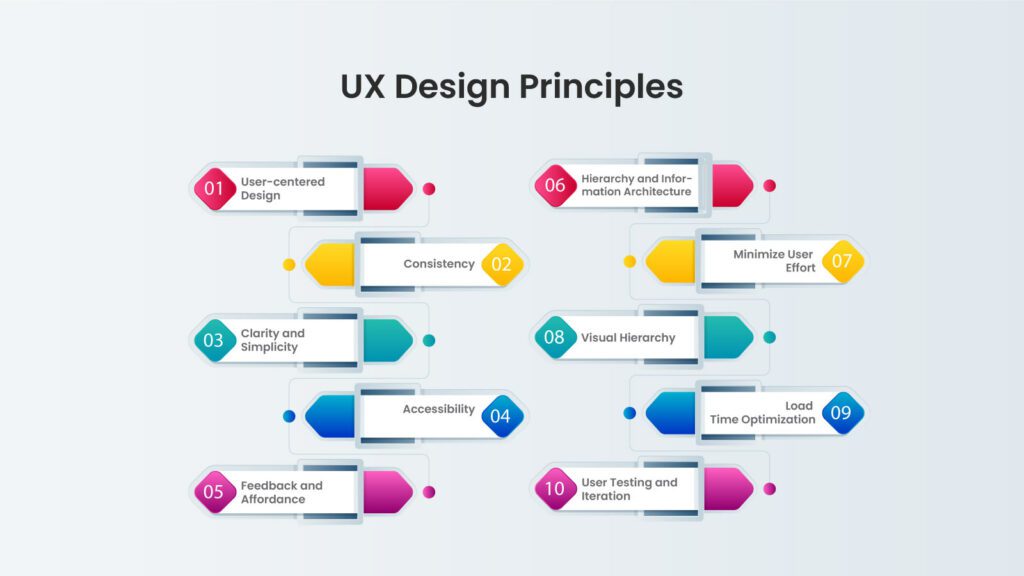
UX (User Experience) design is guided by several principles that aim to create user-centred, efficient, and enjoyable experiences when interacting with products, websites, or services. Here are some fundamental UX design principles:
- User-centered Design: Prioritize users’ needs, preferences, and behaviors throughout the design process. Understand your target audience through research, surveys, and feedback.
- Consistency: Maintain uniformity in design elements, such as colors, fonts, and layouts, to create a coherent and recognizable user interface. Consistency helps users navigate and understand the product more easily.
- Clarity and Simplicity: Keep designs clear and straightforward, avoiding unnecessary complexity. Simplified interfaces reduce cognitive load and enhance usability.
- Accessibility: Ensure the design is accessible to all users, including those with disabilities. Use proper alt text for images, provide keyboard navigation, and follow accessibility guidelines (e.g., WCAG) to make your product inclusive.
- Feedback and Affordance: Provide immediate feedback when users interact with elements. Users should know what an element does and receive confirmation that their action was successful.
- Hierarchy and Information Architecture: Organize content logically and create a clear information hierarchy. Prioritize important information and guide users through a structured flow.
- Minimize User Effort: Strive to reduce the steps and effort required for users to accomplish their goals. The intuitive design anticipates user needs and streamlines processes.
- Visual Hierarchy: Use cues like size, color, and positioning to emphasize important content or actions. Guide users’ attention to key elements on the page.
- Load Time Optimization: Optimize load times to ensure users do not experience frustrating delays. Slow-loading websites and apps can lead to high bounce rates.
- User Testing and Iteration: Continuously test your designs with real users and gather feedback. Iterate and refine the design based on user insights and evolving requirements.
Differences Between Product Design Vs UX Design
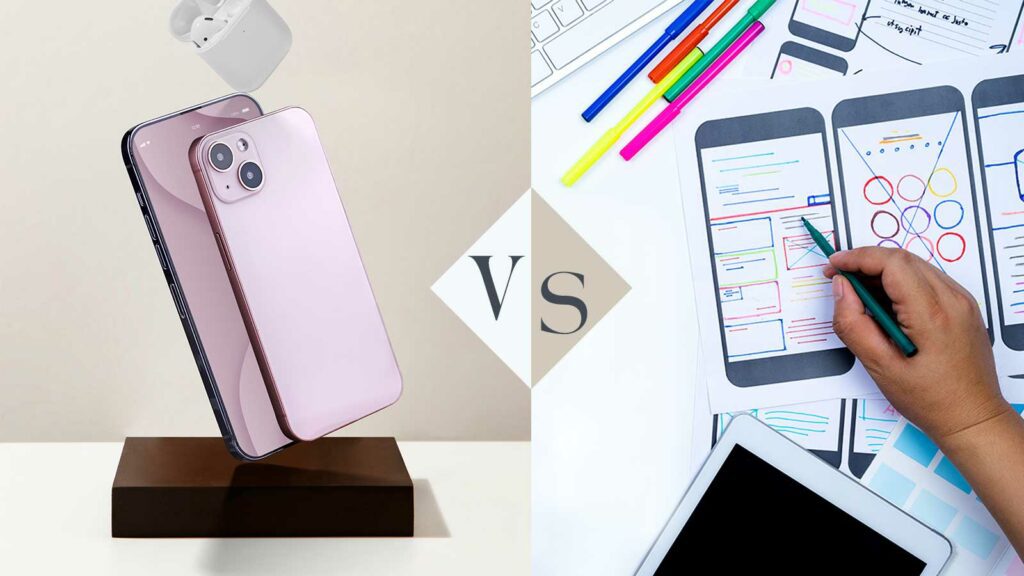
Product and UX (User Experience) design are two crucial disciplines in the design world, often intertwined but with distinct focuses and objectives. Both are essential in creating successful products and services, yet they have unique roles and responsibilities. This article will explore two key differences between product design and UX design.
Scope of Focus
Product design encompasses broader responsibilities beyond the user interface and experience. It is a multidisciplinary field that involves designing the entire product, considering not only user needs but also business goals, technology constraints, and market considerations. Product designers are responsible for a product’s overall look, feel, and functionality.
Product designers collaborate closely with cross-functional teams, including engineers, marketers, and business strategists, to ensure the product aligns with the company’s vision and objectives.
UX design, on the other hand, is a specialized field that primarily focuses on the user’s journey and interaction with a product or service. UX designers are concerned with optimizing the user’s experience, making it intuitive, efficient, and enjoyable. They delve deep into understanding user behaviors, pain points, and goals through research, user testing, and feedback analysis.
UX designers create wireframes, prototypes, and user flows to design interfaces that facilitate seamless navigation and interaction. They also work on information architecture, content strategy, and usability testing to ensure the product meets user needs.
Time and Iteration
Product design often operates on a longer time frame, as it involves the entire product development lifecycle. Product designers work on concept development, ideation, prototyping, and refinement. They must consider factors like production processes, cost-effectiveness, and scalability, which may require more time and iteration.
UX design tends to have a shorter time frame, emphasizing rapid prototyping and iterative design. UX designers prioritize user feedback and continuous improvement throughout the product’s development cycle. They conduct usability tests, gather insights, and quickly implement changes to enhance the user experience.
Design Deliverables and Artifacts
UX designers primarily focus on creating digital and interactive experiences. As a result, their design deliverables and artifacts are centered around user interfaces and user interactions. Key UX design deliverables include wireframes, interactive prototypes, user personas, journey maps, and usability test reports. These materials are essential for visualizing and testing the user experience.
Product designers create various design deliverables and artifacts encompassing product development. These may include detailed CAD (Computer-Aided Design) drawings, 3D models, technical specifications, and design prototypes. These materials are essential for communicating the product’s form and functionality to engineers, manufacturers, and stakeholders.
Skillsets and Expertise
Product designers typically possess a diverse skill set that includes industrial design, engineering knowledge, materials expertise, and an understanding of manufacturing processes. They must have a strong grasp of aesthetics, ergonomics, and functionality. Product designers often work closely with business teams to understand market trends, competitive analysis, and product positioning.
UX designers, on the other hand, specialize in human-centered design principles, psychology, and usability. They deeply understand user research methodologies, such as interviews, surveys, and usability testing, to gather insights into user behavior and preferences.
Proficiency in design software, such as Sketch, Figma, or Adobe XD, is crucial for creating wireframes and prototypes. UX designers also need strong communication skills to effectively convey their design concepts and rationale to cross-functional teams. Collaboration with user researchers, product managers, and developers is essential to ensure the final product aligns with user goals and business objectives.
Evaluation Criteria
Product designers evaluate their designs based on various criteria, including functionality, durability, cost-effectiveness, and manufacturability. Their primary goal is to create products that meet user needs and are feasible to produce within budget constraints. Product designers often consider factors like materials selection, engineering requirements, and regulatory compliance in their evaluations.
UX designers are deeply concerned with empathy for users and strive to create designs that address user pain points and enhance overall satisfaction. The success of a UX design is often determined by how well it meets user needs and whether it improves key user interactions and journeys within a digital product or service.
Lifecycle Stage
Product design primarily operates in the early stages of a product’s development lifecycle. Product designers are involved from concept ideation through to the detailed design phase. They are critical in defining the product’s form, function, and initial specifications. However, their involvement decreases as the project progresses into manufacturing and distribution.
UX design, in contrast, is a continuous process that spans the entire product lifecycle. UX designers are involved from the early conceptual stages through the development, launch, and post-launch phases. They continually gather user feedback, conduct usability testing, and iterate on the design to improve the user experience.
Tools and Software
Product designers often use diverse tools and software to create their designs. These tools can include CAD (Computer-Aided Design) software like SolidWorks or AutoCAD for creating detailed product drawings and 3D models. Additionally, they may use rendering software to visualize the product’s appearance in various lighting conditions and environments. Collaboration tools like project management software and communication platforms are essential for coordinating with cross-functional teams and stakeholders.
UX designers predominantly rely on digital tools and software tailored to user interface and experience design. Software like Sketch, Figma, Adobe XD, and InVision are popular for creating wireframes, interactive prototypes, and mockups of user interfaces. These tools offer features designed for rapid iteration and collaboration among UX designers and other team members.
User-Centered vs. Multi-Stakeholder Approach
Product designers consider a range of stakeholders in their design process, including end-users and manufacturers, suppliers, distributors, and marketing teams. While they aim to create user-friendly and marketable products, they must balance these considerations with the practicality of production, cost-effectiveness, and alignment with business goals. This multi-stakeholder approach often involves trade-offs and compromises to meet various objectives.
UX designers take a primarily user-centered approach. They focus on understanding and empathizing with the end-users to create designs catering to their needs and preferences. While they collaborate with other team members and stakeholders, the primary lens through which they view the design is the user’s perspective.
Similarities Between Product Design And UX Design:
- User-Centered: Both prioritize understanding user needs and preferences.
- Iterative Process: Both involve iterative design and frequent testing.
- Collaboration: Both require collaboration with cross-functional teams.
- Problem Solving: Both focus on solving design problems to create better experiences.
- User Research: Both involve conducting user research to inform design decisions.
- Prototyping: Both utilize prototyping to visualize and refine design concepts.
- Usability: Both aim to enhance usability and user satisfaction.
- Aesthetics: Both consider aesthetics and visual appeal in design.
- Feedback Integration: Both incorporate feedback from users and stakeholders.
- Goal Alignment: Both strive to align design with business goals and objectives.
How To Be A Successful Product Designer?
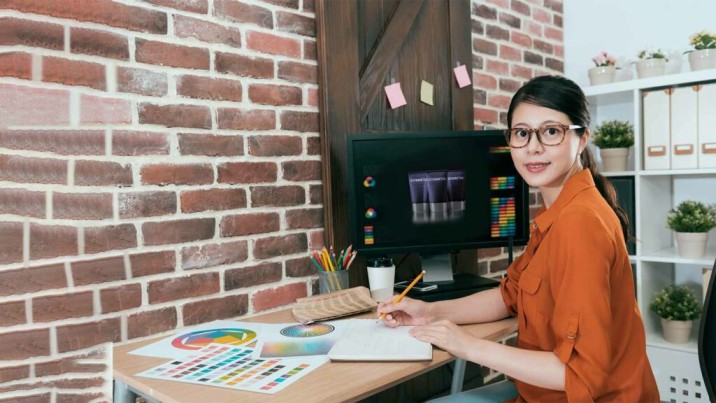
Becoming a successful product designer involves a combination of skills, knowledge, and strategies. Here are some steps to help you on your path to success:
Build a Strong Foundation:
- Start with a solid education in design, which can include a bachelor’s or master’s degree in industrial design, product design, or a related field.
- Gain expertise in design software, such as CAD (Computer-Aided Design) tools, 3D modeling software, and graphic design applications.
Understand User-Centered Design:
- Learn the principles of user-centered design (UCD) and human-computer interaction (HCI) to prioritize user needs and preferences.
Embrace Cross-Disciplinary Learning:
- Familiarize yourself with related fields, including engineering, materials science, and manufacturing processes, to understand the broader context of product design.
Build a Strong Portfolio:
- Create a diverse portfolio showcasing your design projects, demonstrating your skills, problem-solving abilities, and design process.
- Highlight projects that reflect your versatility in designing for various industries and user needs.
Gain Real-World Experience:
- Seek internships or entry-level positions to gain practical experience and learn from experienced designers and engineers.
- Volunteer for design projects, even if they are outside your comfort zone, to expand your skill set.
Develop Strong Communication Skills:
- Effective communication is crucial for collaborating with cross-functional teams and conveying your design ideas to stakeholders.
- Practice presenting your designs and explaining your thought process clearly and persuasively.
Stay Current with Trends:
- Stay up-to-date with the latest design trends, materials, and technologies in the industry.
- Attend design conferences, workshops, and webinars to continue learning and networking.
User Research and Testing:
- Master user research techniques, including interviews, surveys, and usability testing, to gather valuable insights for your designs.
- Incorporate feedback from users and stakeholders to improve your designs iteratively.
Iterate and Prototype:
- Embrace an iterative design process, creating multiple prototypes to refine your ideas and test different concepts.
- Use digital prototyping tools and physical models to visualize and communicate your designs effectively.
Develop a Design Philosophy:
- Define your design principles and values that guide your work and approach to design problems.
- Be adaptable and open to evolving your design philosophy as you gain experience.
Networking and Collaboration:
- Connect with fellow designers, engineers, and industry professionals to build a professional network.
- Collaboration is key in product design, so cultivate strong working relationships with team members.
Continuous Learning:
- The design field constantly evolves, so commit to lifelong learning and adaptability.
- Explore new tools, technologies, and methodologies to stay competitive.
Portfolio Management:
- Regularly update your portfolio to showcase your most recent and relevant work.
- Tailor your portfolio to match the specific job or project you’re pursuing.
Average Salary Of A Product Designer In The USA
The average salary for a Product Designer in the United States is approximately $86,384 per year. However, when considering total compensation, which includes bonuses, profit-sharing, and other benefits, the estimated total pay for a Product Designer averages around $91,805 per year in the USA. It’s important to note that salaries can vary significantly based on location, level of experience, the specific industry or company, and the designer’s skill set.
In major tech hubs like San Francisco, New York City, or Seattle, product designers often earn higher salaries due to the higher cost of living and strong demand for design talent. Additionally, more experienced product designers or those with specialized expertise may command higher compensation packages. As the field of product design continues to evolve and grow, competitive salaries and opportunities for career advancement are also on the rise.
How To Be A Successful UX Designer?

Becoming a successful UX (User Experience) designer involves a combination of skills, knowledge, and strategies. Here’s a roadmap to help you on your journey to success:
Acquire a Strong Foundation:
- Start with a solid education in UX design or a related field. Many universities and online courses offer UX design programs.
Build a Diverse Portfolio:
- Create a portfolio showcasing various UX design projects, demonstrating your skills in user research, wireframing, prototyping, and usability testing.
Master UX Tools and Software:
- Become proficient in UX design tools such as Sketch, Figma, Adobe XD, or other software relevant to your specialization.
User-Centered Mindset:
- Develop a deep understanding of user-centered design principles, empathizing with users to create intuitive and user-friendly designs.
Practice User Research:
- Learn various user research methods, including interviews, surveys, and user testing, to gather insights and validate design decisions.
Create User Personas:
- Develop user personas to help guide your design decisions and keep the end-user in mind throughout the design process.
Information Architecture and Wireframing:
- Master information architecture to structure content logically and create wireframes as blueprints for your designs.
Interactive Prototyping:
- Create interactive prototypes to visualize and test your designs, allowing for iterative improvements based on user feedback.
Usability Testing:
- Conduct usability tests regularly to evaluate the effectiveness of your designs and make data-driven improvements.
Accessibility and Inclusivity:
- Learn about accessibility standards (e.g., WCAG) to ensure your designs are inclusive and usable by people with disabilities.
Collaborate Effectively:
- UX designers often work in cross-functional teams, so strong communication and collaboration skills are essential.
Stay Current with Industry Trends:
- Stay updated on emerging UX trends, tools, and technologies by reading books articles, and attending conferences and webinars.
Develop a Design Process:
- Establish a systematic design process that includes research, ideation, prototyping, testing, and iteration.
Feedback and Continuous Learning:
- Seek feedback from peers, mentors, and users to improve your skills and designs continuously.
Average Salary Of A UX Designer In The USA
The average salary for a User Experience (UX) Designer in the USA is approximately $103,664 per year. However, it’s important to note that salaries can vary significantly based on factors such as experience, location, industry, and the specific skills possessed by the designer.
UX Designers with specialized skills tend to earn more. Those with skills that are in high demand, such as interaction design, user research, and prototyping, often command higher salaries. UX Designers with these skills can earn approximately 36.35% more than the average base salary.
Furthermore, the location within the USA can significantly impact salaries, with major tech hubs like San Francisco, Seattle, and New York typically offering higher compensation to UX Designers due to the higher cost of living and the strong demand for tech talent in these areas.
Frequently Asked Questions
What is the main difference between product design and UX design?
Product design focuses on the entire product, including its physical aspects and functionality, while UX design primarily concentrates on creating optimal user experiences within a digital or interactive context.
Can a product designer also work as a UX designer, or vice versa?
Yes, designers can transition between these roles as there is an overlap in skills and methodologies. However, transitioning may require acquiring additional skills and adapting to the specific demands of the new role.
How do product and UX designers collaborate on a project?
Product and UX designers collaborate by sharing insights, user research findings, and design concepts. They work together to ensure that the product meets user needs, is feasible to produce, and aligns with business goals.
Which field offers better career opportunities: product design vs UX design?
Career opportunities in both fields are robust. The choice should align with your interests and strengths. UX design has grown significantly due to the digital era, while product design remains vital for physical and digital product creation.
Is user research equally important in both product and UX design?
User research is critical in both fields. In UX design, it informs the design of digital interfaces, while in product design, it helps understand user needs for physical products and informs the overall design process.
What tools are commonly used in product and UX design?
In product design, tools like CAD software, 3D modeling software, and physical prototyping tools are common. In UX design, tools like Sketch, Figma, Adobe XD, and usability testing platforms are frequently used for wireframing, prototyping, and user testing.
Finally, Product Designer VS UX Designer: Which Career To Choose?
Choosing between a career as a Product Designer or a UX Designer ultimately depends on your interests, skills, and career goals.
- If you enjoy creating physical products, have a passion for materials and manufacturing processes, and appreciate a broader perspective encompassing aesthetics, functionality, and business goals, Product Design may be the right choice.
- On the other hand, if you’re passionate about digital interfaces, user interactions, and creating seamless, user-centric experiences, then a career in UX Design may be more appealing. UX Designers focus on improving user satisfaction and optimizing the usability of digital products.
Consider your strengths and interests, and remember that both fields offer fulfilling and dynamic career paths. Many designers also find opportunities to blend elements of both disciplines in their work, making the choice less rigid and more flexible to personal preferences and industry demands.
Read More Article:

















































